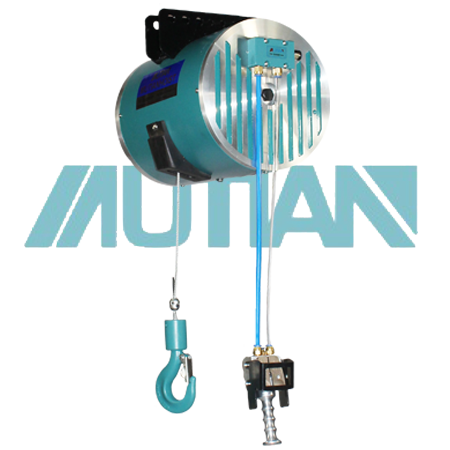 中文版
中文版



Welcome to contact us by phone:0086-0312-7969888
A pneumatic balancer is a mechanical device used in various industrial applications to handle loads with ease and precision. It operates based on the principles of pneumatics, utilizing compressed air to control the movement of loads in a balanced and controlled manner. The primary purpose of a pneumatic balancer is to reduce the physical effort required by operators when handling heavy loads, thus improving productivity and safety in the workplace.
Here's a basic introduction to how pneumatic balancers work:
Compressed Air Supply: Pneumatic balancers require a source of compressed air to function. This air is typically supplied through a compressor system and is stored in a reservoir or tank.
Load Handling: Pneumatic balancers are designed to handle a wide range of loads, from light to heavy. The load to be handled is attached to the balancer via a hook or other attachment mechanism.
Balancing Mechanism: Inside the pneumatic balancer, there is a system of valves, cylinders, and controls that regulate the flow of compressed air. This system allows the balancer to precisely adjust the air pressure to achieve balance between the load and the operator's input.
Control Interface: Pneumatic balancers are equipped with user-friendly control interfaces that allow operators to adjust parameters such as lifting speed, lowering speed, and float mode (which allows for manual positioning of the load without exerting force).
Safety Features: Many pneumatic balancers are equipped with safety features such as overload protection, emergency stop buttons, and safety interlocks to prevent accidents and injuries.
Applications: Pneumatic balancers are commonly used in manufacturing, assembly lines, warehouses, and other industrial settings where repetitive lifting and positioning of heavy objects are required. They can be found in industries such as automotive, aerospace, electronics, and logistics.
Advantages: The use of pneumatic balancers offers several advantages, including increased productivity due to reduced operator fatigue, improved ergonomics, precise control over load positioning, and enhanced safety by minimizing the risk of accidents and injuries.
Overall, pneumatic balancers are valuable tools for improving efficiency, safety, and ergonomics in industrial environments where handling heavy loads is a routine task.
X